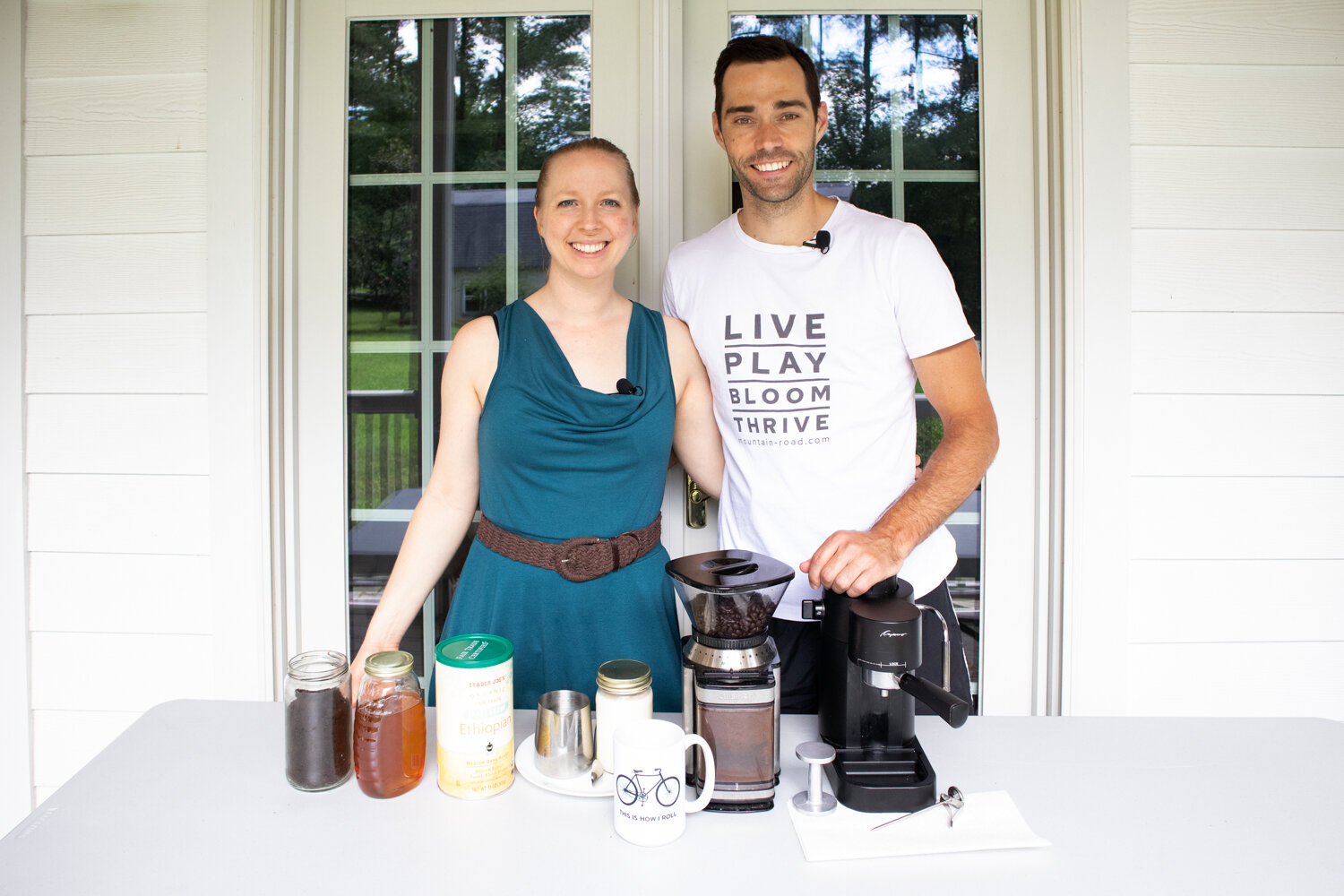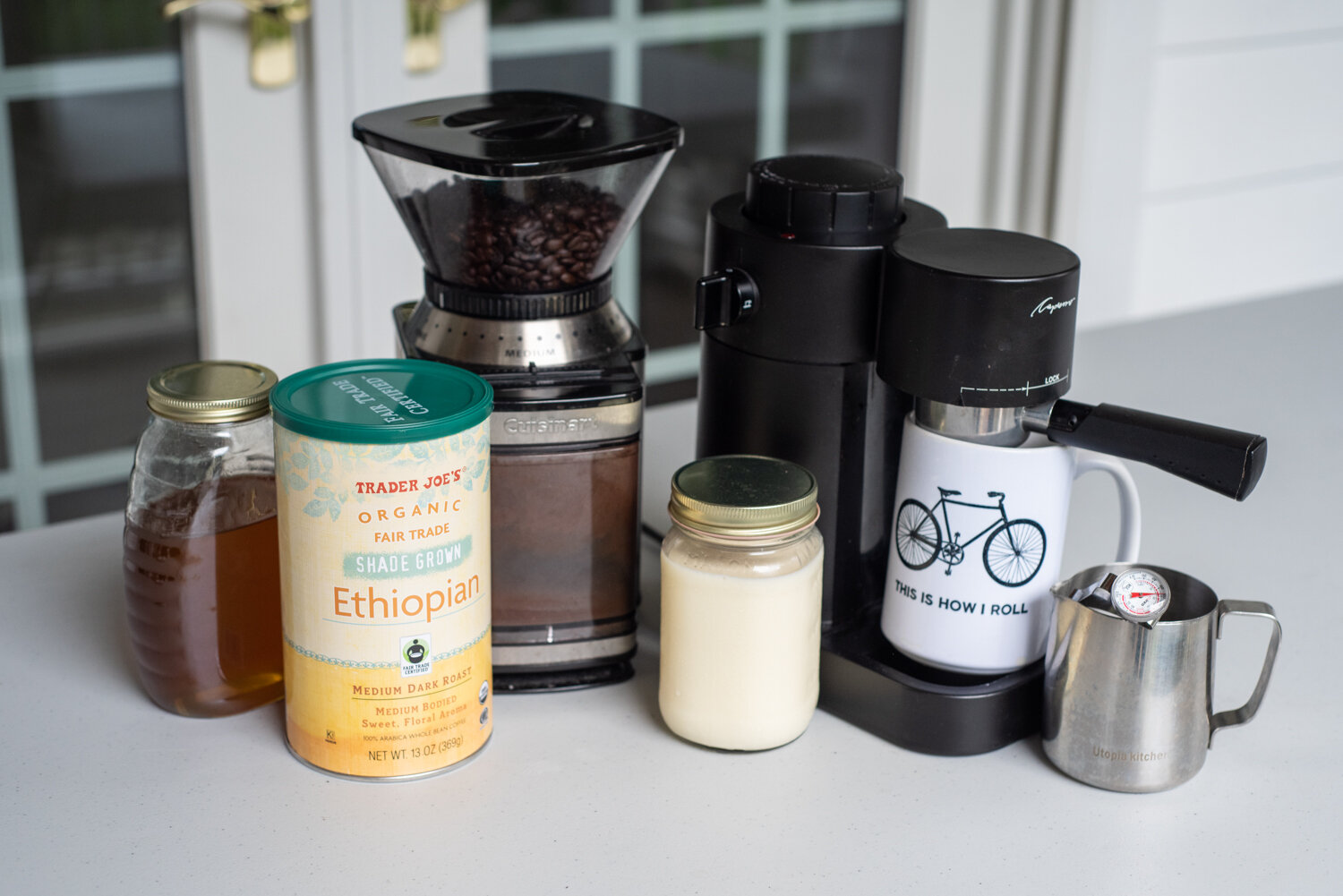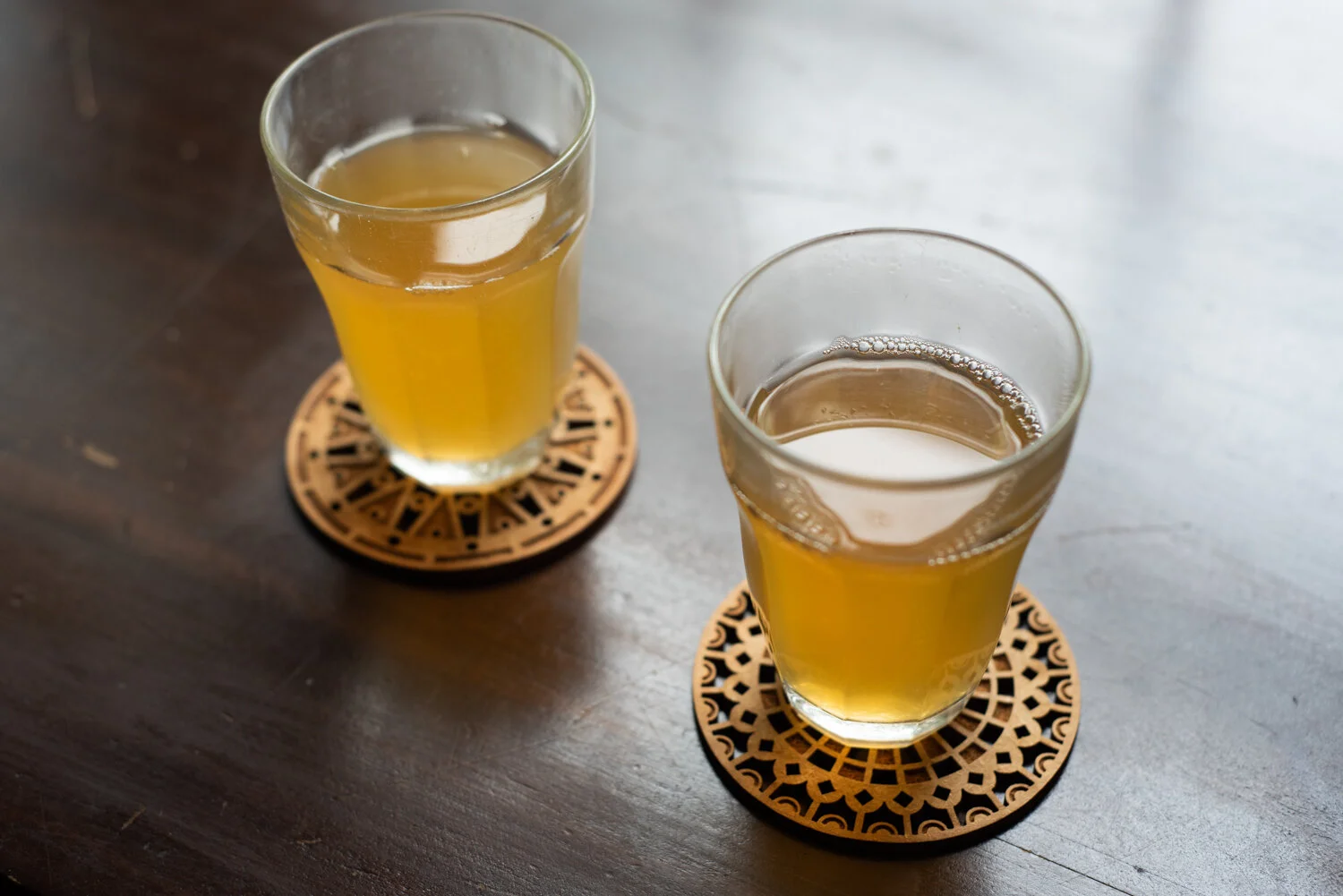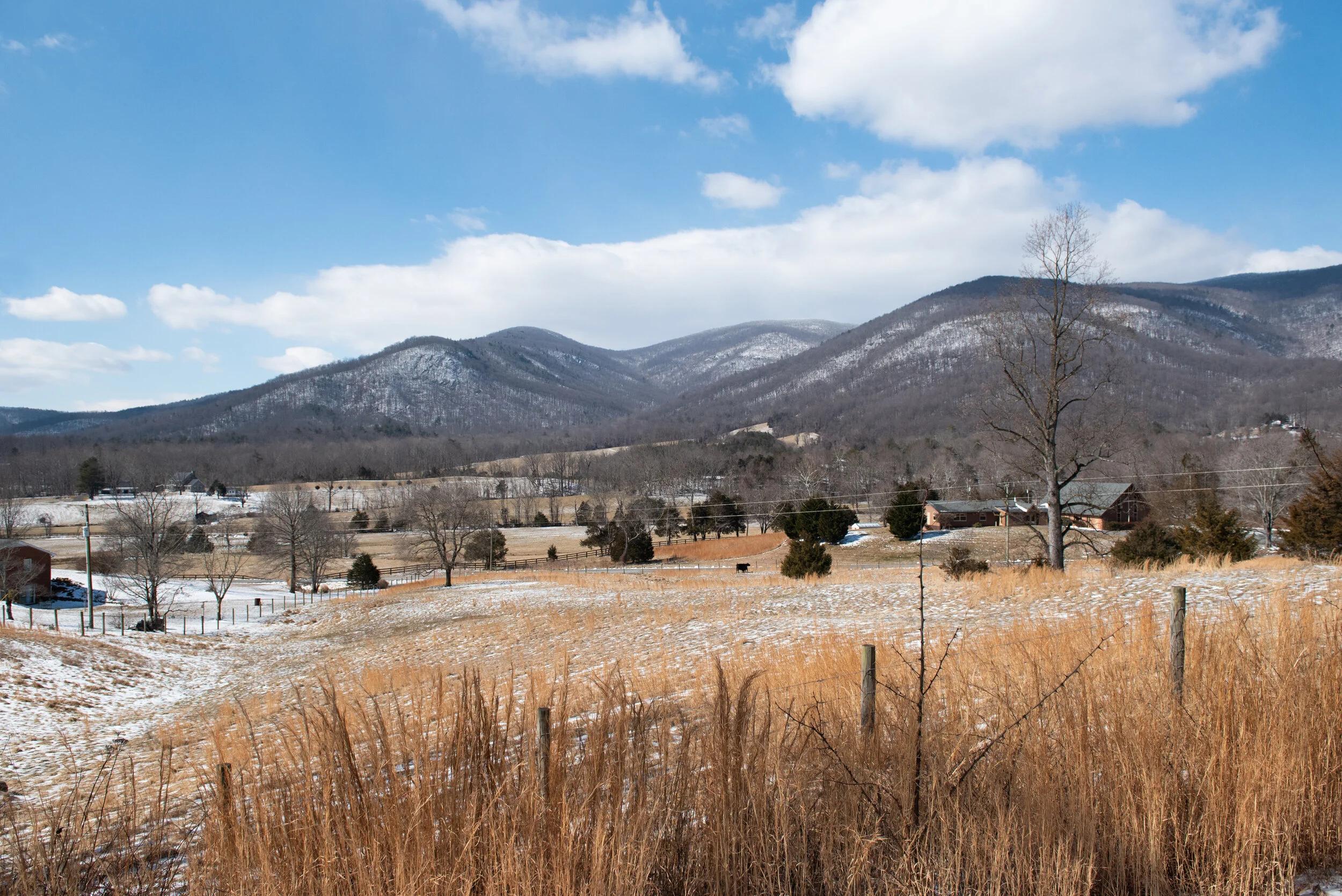How to Make an Incredible Cup of Coffee with THIS Secret Ingredient
Disclaimer: This post contains affiliate links, through which we earn a commission.
Coffee. You either love it or you don't. Right? Well, I'm somewhere in between. I love the taste of coffee, at least the way Wiehan makes it. But I'm highly sensitive to caffeine and it really messes up my metabolism, causing my blood sugar levels to plummet, while providing a "tired, but wired" affect. After sipping from Wiehan's morning latte every day for the last 4 years, I finally gave it up and feel marvelously better without it. But I sure do long to taste it every time I catch a whiff of those glorious roasted beans. When it comes to what I eat, I mostly follow a combinations of the Autoimmune Protocol (AIP) and the dietary recommendations of the Weston A. Price Foundation (WAPF). Sally Fallon Morell, the founder of WAPF, strongly advises against drinking coffee, as discussed in this Wise Traditions podcast episode, due to it's negative affects on hormones, particularly adrenaline. And the legal addictive stimulant is definitely a no no on the AIP diet, because in addition to causing adrenal issues, it is a seed, which can commonly trigger inflammatory responses for those of us with food sensitivities. Nevertheless, over 50% of American adults drink coffee every day, and it's globally one of the most popular beverages. So I realize that even though the sources by which I choose my dietary decisions don't recommend consuming the drink, many of our readers probably enjoy their daily cup of Joe just as much as Wiehan does. Therefore, we want to share the process by which we make coffee in our household. It's honestly better than any cup of coffee we've ever tried at any cafe worldwide, all because we use one very important, controversial and hard to come by ingredient. Intrigued yet? Keep reading! ...and drink at your own risk.
First, you'll need a proper espresso machine, with a steamer. Four years ago, we found an old Capresso espresso machine in my parents' basements that belonged first to my cousin, later to be passed down to my older brother. Wiehan cleaned up the dusty appliance and put it to work. He's been making lattes every morning from the trusty machine ever since, and most days, he also makes a second cup in the afternoon. We even pack it in the car for road trips!
If you’re searching for a new espresso machine, here are the three that Wiehan recommends, based on price ranges and ratings:
Most days, Wiehan brews these organic, fair trade beans from Trader Joe's and adds a teaspoon of raw honey. But the secret ingredient that sets his coffee head and shoulders above any brews we've ever tasted worldwide is one that is very controversial in the United States: raw milk. Why is raw milk so controversial in the U.S.? Well, if milk is processed in an unsanitary environment, the milk can become contaminated, and in turn cause sickness and even death. For one particular story of raw milk going bad, look up New York City's swill milk scandal of the 1850s. The conditions, as well as the greed and deadly consequences in that case are completely appalling. However, modern dairies, such as the one we support have set up a very sanitary and hygienic process that produces a product that is arguably even more clean and safe than the ultra-pasteurized and homogenized products available in a typical grocery store.
We had the opportunity to visit the farm of WAPF's founder Sally Fallon Morell through a local chapter tour. She walked us through the process of how they produce their milk and cheese. And while the process is much more complex than I could even remember in detail or explain, it's clear that raw milk is actually designed to be a safe food. It contains elements that fight bad bacteria, such as lactoperoxidase, lactoferrin, leukocytes, B-lymphocytes, macrophages, neutrophils, T-lymphocytes, immunoglobulins, antibodies and more! To learn more about the role that each enzyme plays, check out this document created by WAPF. And if you’re on the fence about going raw with your dairy, I highly recommend listing to the Wise Traditions podcast episode titled "Is Raw Milk Safe." As someone very concerned about food safety, I was very concerned about the risks involved before making the switch, but we've been drinking raw milk for four years, with no plan to ever return to the cooked stuff. Keep in mind that the CDC will heavily dispute the stance taken by WAPF on the matter, so do your own research and drink at your own risk, making sure that you are purchasing from a safe and credible source. Though, for the sake of the topic of this blog post, if you're just purchasing raw milk as a creamer for coffee, when steamed at 145° for 30 seconds, the milk does essentially become pasteurized in any case. But even still, the richness of the raw milk is far superior to that of any pasteurized whole milk, making it a perfect selection for your daily brew.
Back in 2013, when I lived in Helsinki, Finland, I was able to purchase raw milk at an alternative grocery store within walking distance from my apartment, called Anton & Anton. Additionally, while living an hour outside Johannesburg in South Africa from 2014 - 2016, I found that raw milk was extremely difficult to track down, but I was ultimately able to purchase it from two companies: Organic Emporium and Nature's Heritage. In the U.S., New Jersey is the last state to legalize raw milk. Otherwise, eleven states allow the sale of raw milk in stores; seventeen states allow farms to sell directly to consumers; seventeen states, including Virginia, where we live, allow complicated herdshare programs; and 4 states, including Maryland, the location of Sally Fallon Morell's farm, allow raw milk to be sold as "pet food." Wherever you live in the world, if you're interested in finding raw milk, you'll have to do some research to figure out how to get it. The Campaign for Real Milk has excellent information about raw milk, including a breakdown of what is legal for each state and some information available for international legality here and here. Be sure to watch our corresponding video, to see Wiehan walk through the process of how he makes his coffee each day.
Wiehan's Homemade Latte Recipe
Total Time: 10-15 minutes
Makes: 14 oz. (414 mL) latte
Equipment:
Espresso Machine
Coffee Grinder
Espresso Tamper
Frothing Pitcher
Frothing Thermometer
Measuring Spoons
Kitchen Towel
Coffee Mug
Compost Bin
Ingredients:
4 Tbsp (60 mL) Ground Coffee
12 oz. (355 mL) Filtered Water
8 oz. (240 mL) Locally Sourced Raw Milk
1 tsp (5 mL) Locally Sourced Raw Honey (optional)
Instructions:
While every espresso machine is different, the same basic principles should apply. For questions about the functionality of your machine, be sure to check the user manual. And if you are looking for a new espresso machine, be sure to check out Wiehan’s recommendations in the chart above.
Discard coffee grounds from previous batch of coffee into home compost bin. If using an espresso machine, you'll pour water in the designated container, grind the beans and place them in the filter, enough to reach just above the designated filling line. Tamp down the ground beans. They should now be about equal to the filling line in the filter. Place the filter into the filter handle and fasten into the designated part of the espresso machine. Place mug in designated area to catch the espresso. Set the espresso machine to begin making coffee. Depending on the machine, it will take several minutes for the water to boil and drip through the filter. In the meantime, pour milk into the frothing pitcher. Turn off the machine when the espresso has filled the mug to the desired level. If using an espresso machine with a steamer, allow a small amount of steam to come out of the wand, while placing a towel over the wand to assist in cleaning the wand. Do this carefully, using the towel to protect your hands from the boiling hot steam. Place the thermometer inside the frothing pitcher and lift up the pitcher to the wand, so that the air opening on the wand is resting just at the top of the milk. Carefully turn on the steam. Keep in mind that the metal pitcher can get very hot, so be careful only to hold it by the handle. Steaming the milk takes a bit of practice, but the goal is to hover the air opening just at the top of the milk until you get a swirling movement. Then the wand can go a little deeper into the milk. Continue the swirling movement and steam until the thermometer reading measures between 150-160°F (66-71°C), or until the milk has risen to the top of the pitcher. Pour the steamed milk into the mug and add honey, if desired. Enjoy!
And tell us! Would you ever consider switching from pasteurized milk to raw?
- Christin










